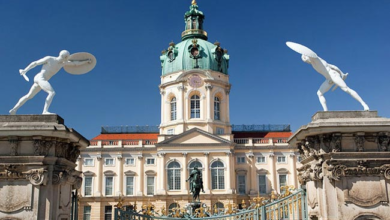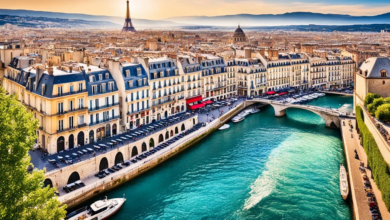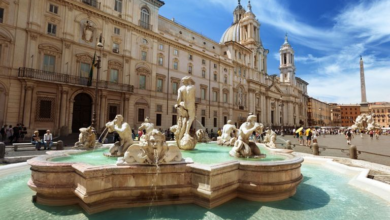Exploring Spain: Efficient Travel Tips for City Hopping

Introduction:
Spain, a country known for its vibrant culture, rich history, and diverse landscapes, offers an abundance of captivating cities to explore. From the bustling streets of Madrid to the enchanting architecture of Barcelona, Spain’s cities are a treasure trove of experiences. To make the most of your visit and efficiently move between cities, here are some helpful tips and recommendations.
- High-Speed Rail (AVE):
Spain’s extensive high-speed rail network, known as AVE (Alta Velocidad Española), is an excellent option for fast and convenient travel between major cities. The AVE trains connect cities like Madrid, Barcelona, Seville, Valencia, and more, allowing you to reach your destination quickly and comfortably. With comfortable seating, onboard amenities, and reliable schedules, the AVE provides an enjoyable travel experience while admiring the picturesque Spanish countryside. - Budget Airlines:
For shorter distances or when traveling on a budget, consider taking advantage of Spain’s domestic budget airlines. Companies like Vueling, Ryanair, and Iberia Express offer affordable flights between major Spanish cities, making it a convenient option for those looking to save time or cover longer distances quickly. Be sure to book in advance to secure the best deals and check baggage restrictions to avoid any surprises. - Public Transportation:
Once you arrive in a city, utilizing public transportation networks is an efficient way to navigate and explore. Most cities in Spain have well-developed transportation systems, including metros, buses, and trams. Barcelona and Madrid, in particular, have extensive metro networks that cover the entire city and provide easy access to major attractions. Purchase a rechargeable travel card or a multi-journey ticket for cost-effective and hassle-free travel within the city. - Day Trips:
While exploring Spain’s major cities is undoubtedly captivating, consider incorporating day trips to nearby towns and attractions for a well-rounded experience. From Madrid, venture to Toledo, Segovia, or Ávila, each offering unique historical sites and architectural wonders. Barcelona provides easy access to Montserrat, Sitges, or the Costa Brava, where you can enjoy beautiful coastal landscapes. These day trips allow you to immerse yourself in Spain’s diverse regions and discover hidden gems beyond the city limits. - Overnight Trains:
For longer distances between cities, overnight trains provide a time-saving and budget-friendly option. Renfe, Spain’s national train operator, offers sleeper trains that connect major cities, allowing you to travel while you sleep. Wake up refreshed at your destination and maximize your time exploring the next city. It’s advisable to book your sleeper cabin in advance, especially during peak travel seasons, to secure your preferred accommodations. - Car Rental:
If you prefer the flexibility of driving and exploring at your own pace, renting a car can be a convenient option. However, keep in mind that driving in major cities like Madrid and Barcelona can be challenging due to traffic and parking limitations. Renting a car is better suited for exploring rural areas, coastal regions, or smaller towns where public transportation might be limited. Be familiar with Spanish traffic laws and consider GPS navigation to make your journey smoother. - Plan and Prioritize:
To make the most of your time in Spain and efficiently move between cities, careful planning is essential. Research the cities you want to visit, create a realistic itinerary, and prioritize the attractions or experiences that interest you the most. This will help you optimize your time and ensure you don’t miss out on must-see sites or events. However, leave room for spontaneity and relaxation, as part of the joy of traveling is discovering unexpected treasures along the way.
These additional aspects highlight the depth and variety of travel and tourism experiences available in Spain. From exploring historical landmarks and natural wonders to indulging in sports, fashion, and cultural traditions, Spain offers something for every traveler’s interests and preferences.

additional details about travel and tourism in Spain, focusing on specific cities and attractions:
- Madrid:
Madrid, the capital city of Spain, is a vibrant metropolis known for its rich history, world-class museums, and lively atmosphere. Must-visit attractions include the Prado Museum, home to masterpieces by Spanish artists like Velázquez and Goya, and the Royal Palace, a stunning example of Baroque architecture. Take a stroll through the bustling Puerta del Sol, explore the elegant Retiro Park, and indulge in traditional Spanish cuisine at the city’s numerous tapas bars and restaurants. - Barcelona:
Barcelona, located on the northeastern coast of Spain, is renowned for its unique blend of Gothic and modernist architecture, vibrant street life, and stunning Mediterranean beaches. The city’s most famous landmark is the Sagrada Familia, an awe-inspiring basilica designed by Antoni Gaudí. Explore the narrow streets of the Gothic Quarter, visit Park Güell for panoramic views of the city, and take a leisurely walk along the lively pedestrian street of La Rambla. - Seville:
Seville, located in the region of Andalusia, is known for its rich Moorish heritage, flamenco music and dance, and stunning architectural wonders. The iconic Seville Cathedral, the largest Gothic cathedral in the world, is a must-see, along with the Alcázar of Seville, a stunning palace complex with beautiful gardens. Wander through the charming neighborhood of Santa Cruz, experience a traditional flamenco show, and enjoy tapas in the lively Triana district. - Valencia:
Valencia, situated on the southeastern coast of Spain, combines modern architecture with ancient history and a vibrant cultural scene. Visit the City of Arts and Sciences, a futuristic complex featuring a science museum, an opera house, and an aquarium. Explore the historic center, home to the Valencia Cathedral and the lively Central Market. Don’t miss the opportunity to try the famous Valencian dish, paella, in its place of origin. - Granada:
Granada, located in Andalusia, is renowned for the magnificent Alhambra, a Moorish palace and fortress complex with stunning gardens and intricate architecture. Explore the narrow streets of the Albaicín neighborhood, known for its Moorish influence and charming atmosphere. Enjoy breathtaking views of the city from the Mirador de San Nicolás, and experience the vibrant flamenco scene in the city’s cave bars. - Bilbao:
Bilbao, in the Basque Country, has transformed itself into a modern and cultural hub, anchored by the iconic Guggenheim Museum Bilbao. This architectural masterpiece houses contemporary art exhibitions and is a must-visit attraction. Take a stroll along the riverfront promenade, visit the historic Casco Viejo (Old Town), and savor the region’s renowned pintxos (Basque tapas) in the lively bars. - Cordoba:
Cordoba, also in Andalusia, is famous for its magnificent Mosque-Cathedral (Mezquita), a UNESCO World Heritage site renowned for its dazzling architectural blend of Islamic and Christian elements. Explore the charming Jewish Quarter (Judería), with its narrow streets and picturesque patios adorned with flowers. During the annual Cordoba Patio Festival, many courtyards are open to the public, showcasing their vibrant floral displays.
These are just a few highlights of the many incredible cities and attractions Spain has to offer. Each city has its own unique charm, history, and cultural heritage, ensuring a diverse and rewarding travel experience. Whether you’re interested in art, architecture, gastronomy, or simply immersing yourself in the vibrant Spanish lifestyle, Spain is a destination that promises to captivate and inspire.

some more details about travel and tourism in Spain:
- Andalusia:
Andalusia, located in the southern part of Spain, is a region known for its rich cultural heritage, stunning landscapes, and lively festivals. In addition to the cities mentioned earlier, Andalusia is home to other gems such as Malaga, with its vibrant art scene and beautiful beaches, and Cadiz, one of the oldest continuously inhabited cities in Europe. Explore the stunning white villages (pueblos blancos) scattered throughout the region, such as Ronda and Arcos de la Frontera, and savor the traditional Andalusian cuisine, including gazpacho and fried fish. - The Camino de Santiago:
The Camino de Santiago, also known as the Way of St. James, is a famous pilgrimage route that attracts thousands of visitors from around the world. The most popular route, the Camino Francés, begins in the French town of Saint-Jean-Pied-de-Port and ends in Santiago de Compostela, where the magnificent Santiago de Compostela Cathedral is located. Walking the Camino is a unique experience, offering opportunities for self-reflection, cultural immersion, and breathtaking natural scenery. - Canary Islands:
The Canary Islands, located off the northwest coast of Africa, are a popular destination for sun-seekers and nature enthusiasts. The archipelago consists of several islands, including Tenerife, Gran Canaria, Lanzarote, and Fuerteventura, each offering unique landscapes and attractions. Explore the volcanic landscapes of Timanfaya National Park in Lanzarote, relax on the sandy beaches of Maspalomas in Gran Canaria, or hike to the summit of Mount Teide, Spain’s highest peak, in Tenerife. - Basque Country:
The Basque Country, situated in the northern part of Spain, is known for its distinct culture, culinary delights, and stunning coastline. Visit San Sebastian, a coastal city renowned for its picturesque beaches, world-class cuisine, and the Kursaal Congress Centre, a striking architectural landmark. Explore Bilbao, as mentioned earlier, and don’t miss the opportunity to try pintxos (Basque tapas) in the quaint fishing village of Getaria or the lively streets of Bilbao’s old town. - Costa del Sol:
The Costa del Sol, located along the southern coast of Spain, is a popular destination for beach lovers. Resorts like Marbella and Torremolinos offer beautiful sandy beaches, vibrant nightlife, and a wide range of water sports activities. Take a day trip to the charming town of Nerja, famous for its crystal-clear waters and the stunning Nerja Caves, a natural wonder with impressive stalactites and stalagmites. - La Rioja:
La Rioja, located in northern Spain, is a region renowned for its world-class wines. Embark on a wine tour and visit the numerous wineries and vineyards, where you can sample the region’s famous Rioja wine. Explore the picturesque towns of Haro and Logroño, and take in the stunning landscapes of the Sierra de Demanda mountain range. - Festivals and Events:
Spain is known for its vibrant festivals and events throughout the year. The Running of the Bulls (San Fermín) in Pamplona, the Fallas festival in Valencia, the April Fair (Feria de Abril) in Seville, and the La Tomatina tomato fight in Buñol are just a few examples of the country’s lively celebrations. These events offer a unique cultural experience and provide a glimpse into Spain’s rich traditions and festivities.
Spain’s diverse regions offer a wide range of experiences, from cultural and historical landmarks to stunning natural landscapes and culinary delights. Whether you’re interested in exploring vibrant cities, relaxing on pristine beaches, or immersing yourself in local traditions, Spain has something to offer every traveler.
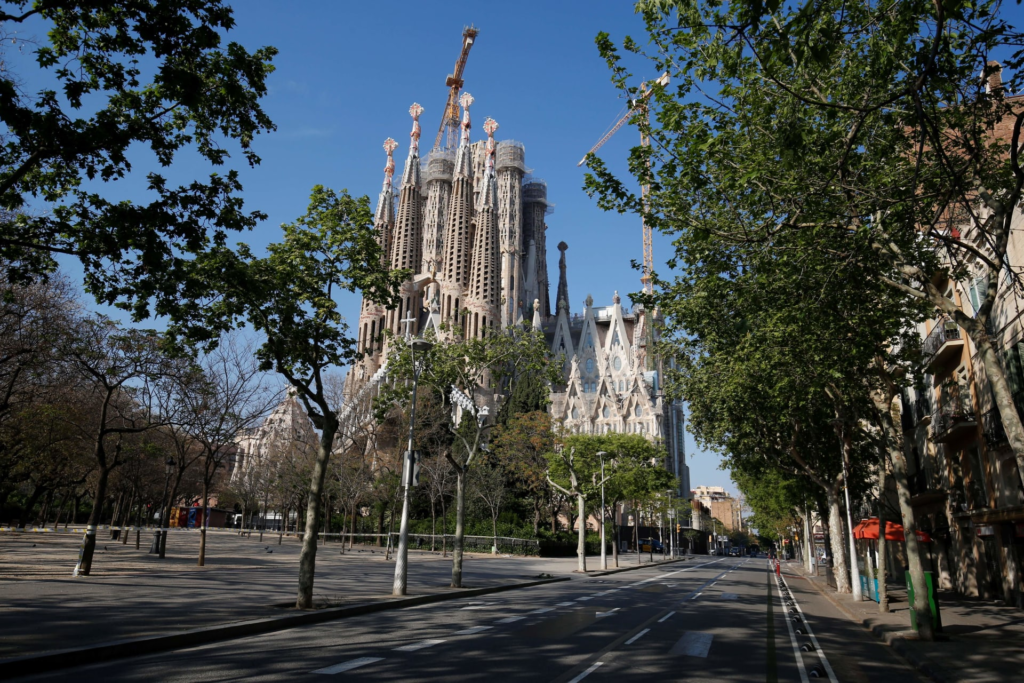
some more interesting aspects about travel and tourism in Spain:
- Spanish Cuisine:
Spanish cuisine is renowned worldwide for its variety, flavors, and regional specialties. Each region has its own culinary traditions and dishes. Some must-try dishes include paella, a rice dish usually prepared with seafood or meat; tapas, small plates of various appetizers or snacks; jamón ibérico, a type of cured ham; and churros, deep-fried dough pastries served with hot chocolate. In addition to these classics, Spain is also famous for its wine production, with regions like Rioja, Ribera del Duero, and Priorat offering excellent wine-tasting experiences. - Flamenco:
Flamenco is a passionate and expressive art form that originated in Andalusia and is deeply ingrained in Spanish culture. It combines music, dance, and singing to create a mesmerizing performance. You can experience flamenco shows in cities like Seville, Granada, and Madrid, where talented artists showcase their skills and emotions through rhythmic footwork, soulful singing, and intricate guitar playing. - Outdoor Activities:
Spain’s diverse landscapes provide ample opportunities for outdoor activities. The country boasts stunning natural parks, mountains, and coastal areas. Hiking enthusiasts can venture into the Picos de Europa in northern Spain, explore the rugged landscapes of the Pyrenees, or tackle the challenging trails of the Sierra Nevada in southern Spain. Water sports enthusiasts can enjoy activities such as surfing in Tarifa, windsurfing in Fuerteventura, or kayaking in the crystal-clear waters of Menorca. - Historical Heritage:
Spain has a long and fascinating history, with numerous historical sites and landmarks. The country is home to several UNESCO World Heritage sites, including the Alhambra in Granada, the historic city of Toledo, and the Roman walls of Lugo. Explore the ancient Roman ruins of Tarragona, visit the medieval castle of Alhambra de Guadix, or wander through the ancient city of Segovia, famous for its Roman aqueduct and fairytale-like castle. - Islands:
In addition to the Canary Islands, Spain has other beautiful island destinations. The Balearic Islands, including Mallorca, Ibiza, and Menorca, are renowned for their stunning beaches, crystal-clear waters, and vibrant nightlife. Mallorca offers a mix of beautiful coastline, charming villages, and Tramuntana Mountains. Ibiza is famous for its electronic music scene and lively clubs, while Menorca is known for its tranquil beaches and natural beauty. - Sports:
Spain is passionate about sports, and football (soccer) is a significant part of the country’s culture. Spanish clubs like Real Madrid and Barcelona FC are world-renowned, and attending a football match at stadiums like Santiago Bernabeu or Camp Nou can be an exhilarating experience. Other popular sports in Spain include basketball, tennis, motorsports, and bullfighting, which still holds cultural significance in certain regions.
These are just a few more fascinating aspects of travel and tourism in Spain. The country’s rich cultural heritage, stunning landscapes, and diverse attractions make it a captivating destination for travelers seeking history, adventure, gastronomy, and unique cultural experiences.

some additional interesting aspects about travel and tourism in Spain:
- Art and Architecture:
Spain has been a significant contributor to the world of art and architecture. In addition to the renowned museums mentioned earlier, such as the Prado Museum in Madrid and the Guggenheim Museum Bilbao, Spain is home to architectural wonders like the Roman Aqueduct in Segovia, the Roman Theatre in Mérida, and the Romanesque Santiago de Compostela Cathedral. The works of famous Spanish artists like Pablo Picasso, Salvador Dalí, and Joan Miró can be admired in various museums and art galleries across the country. - Language and Culture:
Spanish, also known as Castilian, is the official language of Spain. However, the country has several co-official regional languages, including Catalan, Galician, and Basque. Exploring different regions of Spain provides an opportunity to experience diverse cultural traditions, dialects, and customs. Spanish people are known for their warmth and hospitality, and engaging with locals can provide insights into the country’s rich cultural tapestry. - Fiestas and Local Celebrations:
Spain is renowned for its vibrant festivals and local celebrations, which often showcase the country’s unique traditions and cultural heritage. The La Tomatina tomato fight in Buñol, the Running of the Bulls (San Fermín) in Pamplona, and the Holy Week (Semana Santa) processions in various cities are just a few examples. These events offer a chance to witness traditional costumes, music, dance, and religious rituals that have been passed down through generations. - Shopping and Markets:
Spain offers a diverse shopping experience, from high-end fashion boutiques to traditional markets. Cities like Barcelona and Madrid are known for their trendy shops and designer brands, while smaller towns and villages often have artisanal crafts and local products. Markets, such as the Mercado de San Miguel in Madrid and the Mercat de Sant Josep de la Boqueria in Barcelona, are excellent places to sample local food, purchase fresh produce, and immerse yourself in the lively atmosphere. - Day Trips and Excursions:
Spain’s central location in Europe makes it an ideal base for exploring nearby countries and regions. You can take day trips from Spain to visit cities like Lisbon in Portugal, Tangier in Morocco, or the French Riviera. Additionally, regions like the Costa Brava, with its stunning coastal landscapes, or the Pyrenees, known for outdoor activities like skiing and hiking, offer opportunities for exciting excursions and adventures. - Health and Wellness Tourism:
Spain has become a popular destination for health and wellness tourism. The country offers a range of spa resorts, wellness retreats, and natural hot springs where visitors can relax and rejuvenate. Regions like Andalusia and Catalonia are known for their luxury spa resorts and thermal baths, providing a perfect setting for unwinding and practicing self-care.
These additional aspects contribute to the diverse and enriching travel experience in Spain. Whether you’re interested in history, art, culture, gastronomy, or simply seeking relaxation, Spain offers a plethora of options to satisfy every traveler’s preferences.

some more interesting aspects about travel and tourism in Spain:
https://youtravel.tp.st/9JhAiw6R
- Music and Dance:
Spain has a rich musical heritage, with various genres and styles that reflect the country’s diverse cultural influences. Flamenco, as mentioned earlier, is one of the most iconic music and dance forms in Spain. However, other regional music styles, such as sevillanas in Andalusia, jotas in Aragon, and sardanas in Catalonia, are also worth exploring. Attending live music performances or traditional dance shows can provide an immersive cultural experience. - Sustainable Tourism:
Spain is increasingly focusing on sustainable tourism practices. Many destinations are implementing eco-friendly initiatives to preserve natural resources and protect the environment. You can find eco-lodges, sustainable tour operators, and initiatives promoting responsible travel. National parks and natural reserves, such as Doñana National Park and Teide National Park, offer opportunities for eco-tourism and nature conservation. - Nightlife:
Spanish nightlife is vibrant and diverse, with a wide range of options to suit different tastes. Major cities like Madrid, Barcelona, and Valencia come alive at night with numerous bars, clubs, and live music venues. The nightlife scene often starts late, with locals enjoying tapas and socializing before hitting the clubs, which can stay open until the early hours of the morning. - Sports and Adventure:
Spain’s diverse landscapes provide ample opportunities for outdoor activities and adventure sports. The country has excellent conditions for hiking, rock climbing, cycling, and water sports like surfing, windsurfing, and kiteboarding. The Pyrenees Mountains offer fantastic skiing and snowboarding opportunities during the winter season. Adventure enthusiasts can explore caves, go canyoning, or try paragliding in various regions. - Film and TV Tourism:
Spain has been a popular filming location for numerous international movies and TV series. Locations like Almería, known as the “Hollywood of Europe,” have served as backdrops for iconic films like “Lawrence of Arabia” and “The Good, the Bad and the Ugly.” Fans of the TV series “Game of Thrones” can visit locations like Girona and Osuna, which were featured in the show. Film and TV tourism offer the chance to explore famous sets and relive favorite moments. - Religious Tourism:
Spain has a rich religious heritage, with numerous churches, monasteries, and pilgrimage routes. Apart from the Camino de Santiago, mentioned earlier, other pilgrimage destinations include Montserrat, home to the Montserrat Abbey near Barcelona, and the Sanctuary of Loyola in the Basque Country. These sites attract religious pilgrims, history enthusiasts, and those interested in spiritual journeys.
These additional aspects provide further depth to the travel experience in Spain, offering a diverse range of cultural, recreational, and adventure opportunities. Whether you’re seeking cultural immersion, outdoor exploration, or a taste of the vibrant Spanish lifestyle, Spain has something for everyone.
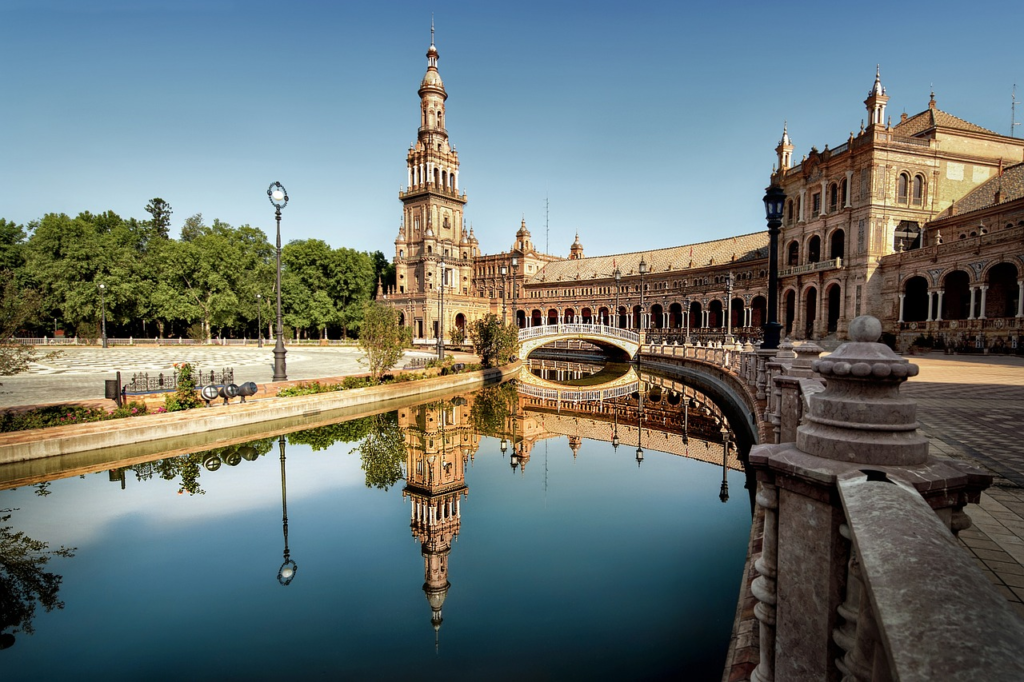
some more interesting aspects about travel and tourism in Spain:
- Festivals and Celebrations:
Spain is known for its lively and colorful festivals throughout the year. One of the most famous is the Feria de Abril in Seville, where locals and visitors come together to celebrate with flamenco dancing, bullfighting, and traditional costumes. The La Tomatina festival in Buñol, where participants engage in a massive tomato fight, is another unique and fun event. Other notable festivals include the Fallas in Valencia, the Carnival of Santa Cruz de Tenerife in the Canary Islands, and the San Fermín festival in Pamplona. - Wine and Gastronomy:
Spain is one of the world’s largest wine producers, and its wine regions offer excellent opportunities for wine tourism. Regions like La Rioja, Ribera del Duero, and Penedès are renowned for their vineyards and wineries, where visitors can take tours, sample wines, and learn about the winemaking process. Spain is also famous for its diverse culinary traditions, ranging from the seafood-rich cuisine of Galicia to the hearty stews of Castilla y León. Food lovers can indulge in tapas crawls, food markets, and Michelin-starred restaurants across the country. - Islands and Beaches:
Spain is blessed with beautiful coastlines and a multitude of islands. In addition to the Canary Islands and the Balearic Islands, mentioned earlier, there are other stunning island destinations to explore. The volcanic landscapes of Lanzarote, the pristine beaches of Formentera, and the rugged cliffs of La Gomera are just a few examples. These islands offer opportunities for sunbathing, water sports, and exploring unique natural environments. - Rural Tourism:
Beyond the bustling cities and popular tourist destinations, Spain has picturesque rural areas that offer a tranquil and authentic experience. Villages like Ronda in Andalusia, Cadaqués in Catalonia, and Riomalo de Abajo in Extremadura showcase traditional architecture, local crafts, and a slower pace of life. Rural tourism allows visitors to immerse themselves in the country’s rural traditions, enjoy outdoor activities, and savor the peacefulness of the countryside. - Literary and Historical Connections:
Spain has been a source of inspiration for many renowned writers and artists throughout history. The works of writers like Miguel de Cervantes, Federico García Lorca, and Pablo Neruda are deeply intertwined with Spanish culture and landscapes. Literary enthusiasts can visit places associated with these writers, such as Cervantes’ birthplace in Alcalá de Henares or Lorca’s home in Granada. Additionally, Spain’s historical connections include the Moorish influence in Andalusia, the medieval heritage of Toledo, and the Roman ruins in Mérida. - Health and Wellness Retreats:
Spain offers a range of health and wellness retreats, where visitors can focus on relaxation, rejuvenation, and self-care. These retreats often include yoga and meditation classes, spa treatments, healthy cuisine, and wellness activities. Locations like the Balearic Islands, Costa Blanca, and Costa del Sol are popular for wellness tourism, offering a combination of natural beauty, pleasant climate, and wellness facilities.
These additional aspects highlight the diverse and enchanting aspects of travel and tourism in Spain. From cultural celebrations and culinary delights to natural beauty and historical connections, Spain offers a wealth of experiences for travelers to explore and enjoy.

some more interesting aspects about travel and tourism in Spain:
- Roman and Moorish Heritage:
Spain has a rich history that includes Roman and Moorish influences. The country is home to well-preserved Roman ruins, such as the Roman Theatre in Mérida and the Roman Bridge in Córdoba. The Moorish era left a lasting architectural legacy, with stunning landmarks like the Alhambra in Granada, the Mezquita-Catedral in Córdoba, and the Alcázar of Seville. Exploring these sites provides a glimpse into Spain’s multicultural past. - Sports Tourism:
Spain is a haven for sports enthusiasts. Football (soccer) is a significant part of Spanish culture, and attending a match at iconic stadiums like Camp Nou in Barcelona or Santiago Bernabéu in Madrid is an exhilarating experience. Other sporting events, such as the MotoGP races in Jerez or the Formula 1 Grand Prix in Barcelona, attract fans from around the world. Spain also offers excellent golf courses, tennis academies, and opportunities for water sports like sailing and windsurfing. - Natural Parks and Reserves:
Spain boasts a diverse range of natural parks and reserves, preserving its unique ecosystems and providing opportunities for outdoor activities. The Picos de Europa National Park in northern Spain offers breathtaking mountain landscapes and hiking trails. The Doñana National Park, a UNESCO World Heritage Site, is a haven for birdwatching and wildlife spotting. The Teide National Park in Tenerife is home to the highest peak in Spain and offers stunning volcanic scenery. - Camino de Santiago:
The Camino de Santiago, or the Way of St. James, is a world-famous pilgrimage route that attracts thousands of travelers each year. The most popular route, the Camino Francés, stretches across northern Spain and culminates at the Santiago de Compostela Cathedral. Walking the Camino de Santiago is a transformative experience, offering a blend of physical challenge, cultural immersion, and spiritual reflection. - Fashion and Shopping:
Spain has a thriving fashion industry and is known for its stylish designs and renowned fashion brands. Cities like Barcelona and Madrid are fashion hubs, offering a mix of high-end boutiques, international brands, and local designers. Fashion lovers can explore trendy neighborhoods like El Born in Barcelona or the Salamanca district in Madrid, where they will find an array of chic shops and concept stores. - Ecotourism in the Canaries:
The Canary Islands, located off the northwest coast of Africa, are a popular destination for ecotourism. The islands are known for their unique flora and fauna, including endemic species found nowhere else in the world. Visitors can explore volcanic landscapes, hike through lush forests, and witness marine life while diving or snorkeling. The islands also provide opportunities for stargazing, as they have some of the clearest skies in Europe.
Conclusion:
Spain’s cities offer an incredible array of cultural, historical, and architectural wonders. By taking advantage of the country’s efficient transportation options, including high-speed trains, budget airlines, and public transportation networks, you can seamlessly navigate between cities and make the most of your visit. Combine careful planning with a sense of adventure, and you’ll create unforgettable memories as you explore the diverse landscapes and vibrant cities of Spain.

